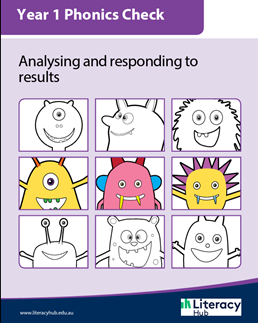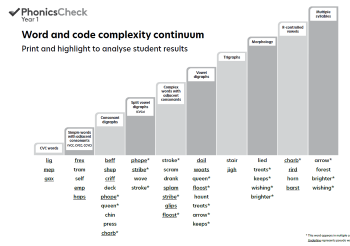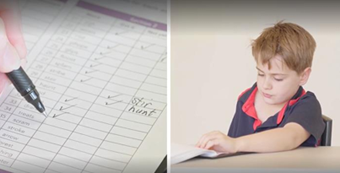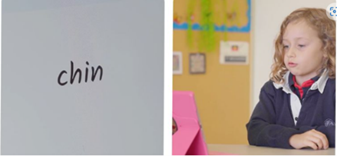Analyse and respond to results
The data you collect from the Year 1 Phonics Check provides valuable information to ensure targeted learning can be in place. Analysis of your data can help you to:
- identify individual and group decoding strengths and instructional needs
- identify students who may need phonics-based intervention
- plan next steps for phonics instruction for individuals and groups
- track effectiveness of your phonics instruction
- monitor decoding ability trends across years.
View this video for an overview of what the Year 1 Phonics Check assesses.
Support to analyse and respond to results
Access the following resources and professional learning to support you to analyse and respond to Year 1 Phonics Check data.
1. Analysing and responding to results guide
Use the Year 1 Phonics Check: Analysing and responding to results guide to help you understand the data you collect from the Phonics Check and how to use it to inform your instruction.
The guide includes:
2. Word and code complexity continuum
This document shows the gradual progression of skills that students need to develop so they can read and spell words with increasing complexity, and details how the continuum can be useful to strategically support students.
This document explains how to use the word and code complexity continuum to analyse individual student reports and provides advice on how to support their strengths and growth in areas of need.
This document explains how to use the word and code complexity continuum to analyse group reports and provides advice on how to support strengths and areas of need for your group.
3. Professional learning
Find out how to analyse and respond to Year 1 Phonics Check data using the word and code complexity continuum. In these professional learning videos, you will learn how to:
- identify individual or group decoding strengths and areas of need
- use this information to plan instruction according to your students’ needs.
You can follow along and analyse your own Phonics Check data. You will need:
- a Year 1 Phonics Check individual student or group report – see the Reporting section of your Year 1 Phonics Check account
- a printed copy of the Year 1 Phonics Check word and code complexity continuum (page 5)
- a green highlighter and an orange highlighter.
Analysing individual student reports videos |
|
Analysing group reports videos
|
|



